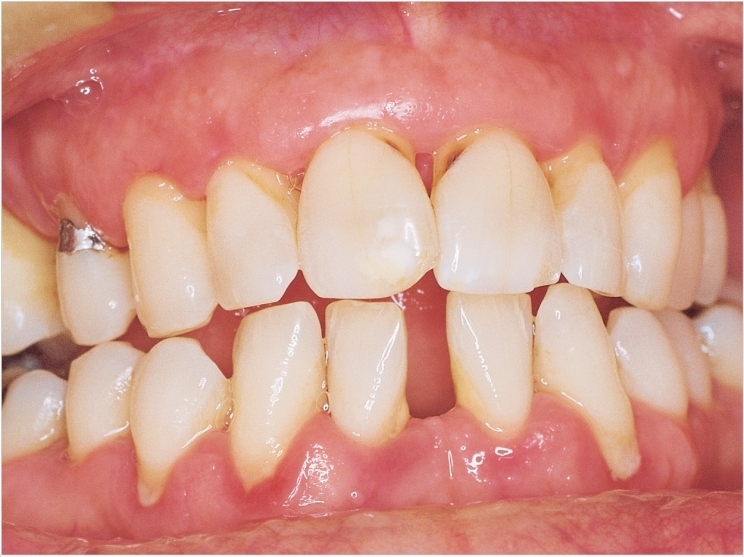
Periodontal disease (PD) and coronary artery disease (CAD) share a common genetic basis involving the function of the VAMP8 gene, according to the results of a meta-analysis that will be presented at the European Federation of Periodontology’s EuroPerio9 conference, June 20 to June 23 in Amsterdam.
“Knowledge of the shared genetic basis helps to understand the molecular mechanisms that underlie and predispose to the disease,” said lead author Arne S. Schäfer, PhD, of the Department of Periodontology and Synoptic Dentistry at Charité University Medicine Berlin in Germany. “This knowledge will guide strategies for therapy but also allow the identification of risk groups for preventive care before the disease manifests itself.”
Strong evidence of an association between CAD and PD has already been established. Both are among the most common diseases. CAD affects 110 million people and is the leading cause of death worldwide, the researchers report, while PD affects 538 million people. Also, both are frequently diagnosed together and have common risk factors such as smoking and diabetes. CAD and PD are characterized by a chronic inflammatory process as well.
But independently of those shared risk factors, previous studies have suggested a few shared genetic variants.
“Our aim in undertaking this study was to further explore the joint genetic basis of CAD and PD. The identification of the shared genetic susceptibility factors will pinpoint relevant molecular pathways for the disease. This knowledge will yield very specific therapeutical targets for precision medicine,” Schäfer said.
“We believe that, given the localized nature of periodontitis, which is confined to the oral cavity, there would be a small variety of different pathways that had the potential to contribute to both diseases,” Schäfer said.
“What we did in this study, which took over 10 years, was to look at every common variant in the entire DNA sequence. These are alternative building blocks called alleles, which are in the millions. We counted if a variant was more common in both CAD and periodontitis cases, compared to healthy controls,” Schäfer said.
“To rule out chance findings, which can be caused by random differences of natural variation, we counted all these variants in all patients of CAD and periodontitis that were available to us. This high number of analyzed individuals and a replication of the results in an independent sample of cases and controls allows us to generalize our findings,” said Schäfer.
During the discovery stage, the researchers used a German sample with aggressive periodontitis (717 cases versus 4,213 controls) and the CARDIoGRAMplusC4D meta-analysis dataset, including 60,801 cases and 123,504 controls.
“Replication was performed in an independent genome-wide association study (GWAS) meta-analysis dataset consisting of patients with either aggressive periodontitis or with chronic periodontitis, from Germany, Austria, the Netherlands, and the United States of America (4,423 cases versus 6,219 controls,” said Schäfer.
The researchers identified a variant in the promoter region of the gene VAMP8 (a promoter regulates the activity of a gene in response to other stimuli) to be significantly more frequent in CAD and periodontitis cases than in healthy controls, indicating the involvement of this gene in the etiology of both diseases.
“VAMP8 is of special interest, because it is involved in the import and export of molecules and other substances into and out of the cells (acting as a sort of door). It is strongly expressed in the epidermis of cellular interfaces of barrier organs of the gastrointestinal tract, which includes the gingiva,” said Schäfer.
“We are now looking in detail at which direction the transport is affected in the disease processes and what substances are involved, eg, microbial substances that get in or antimicrobial substances that get out of the gut,” said Schäfer.
Two single nucleotide polymorphisms at the known CAD risk loci ADAMTS7 (rs4468572) and VAMP8 (rs7568458) passed the pre-assigned selection criteria. SNP rs1561198 showed significant association in both disease phenotypes of PD. For the associated haplotype block allele specific cis-effects on VAMP8 expression were reported.
Though the most efficient way to prevent the onset of both heart and periodontal diseases is to abstain from smoking and live a healthy lifestyle, Schäfer said, PD and CAD aren’t linked to lifestyle factors alone.
“There are probably risk groups that have a genetic predisposition in response to certain factors. This also means that periodontitis does not increase the risk for CAD in general or vice versa. Nevertheless, a group of individuals may share a genetic predisposition, involving the VAMP8 function, which increases the risk for both diseases,” Schäfer said.
“While it is possible that one disease precedes the onset of the other, that does not necessarily mean that the manifestation of one causes the manifestation of the second disease,” he said.
Related Articles
Risk of Death for Edentulous Heart Disease Patients
Heart Disease Risk Increases With Tooth Loss in Middle Age
Oral Bacteria Linked With Atherosclerosis











